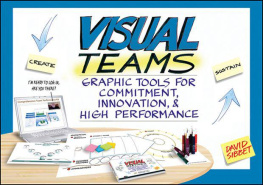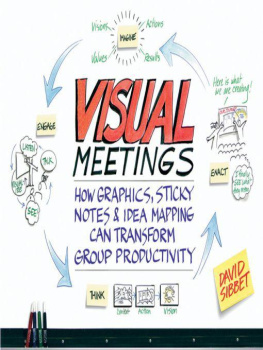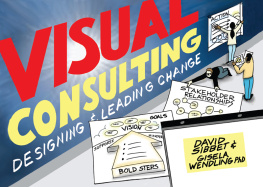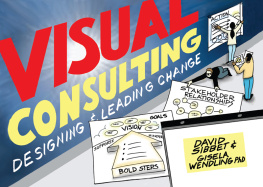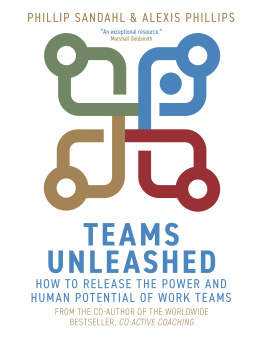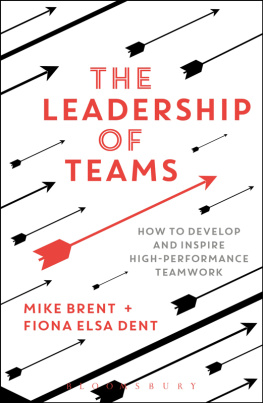CONTENTS

Copyright 2011 by The Grove Consultants International. All rights reserved.
Published by John Wiley & Sons, Inc., Hoboken, New Jersey.
Published simultaneously in Canada.
No part of this publication may be reproduced, stored in a retrieval system, or transmitted in any form or by any means, electronic, mechanical, photocopying, recording, scanning, or otherwise, except as permitted under Section 107 or 108 of the 1976 United States Copyright Act, without either the prior written permission of the Publisher, or authorization through payment of the appropriate per-copy fee to the Copyright Clearance Center, Inc., 222 Rosewood Drive, Danvers, MA 01923, (978) 7508400, fax (978) 6468600, or on the web at www.copyright.com . Requests to the Publisher for permission should be addressed to the Permissions Department, John Wiley & Sons, Inc., 111 River Street, Hoboken, NJ 07030, (201) 7486011, fax (201) 7486008, or online at http://www.wiley.com/go/permissions .
The following are registered trademarks of The Grove Consultants InternationalGroup Graphics, Graphic Guides, Digital Graphic Guides, and The Drexler/Sibbet Team Performance Model. Trademarks in use include Storymaps, Visual Planning Systems, Strategic Visioning Model, and the Sibbet/LeSaget Sustainable Organizations Model. The Visual Meetings Companysm is a service mark of The Grove.
Limit of Liability/Disclaimer of Warranty: While the publisher and author have used their best efforts in preparing this book, they make no representations or warranties with respect to the accuracy or completeness of the contents of this book and specifically disclaim any implied warranties of merchantability or fitness for a particular purpose. No warranty may be created or extended by sales representatives or written sales materials. The advice and strategies contained herein may not be suitable for your situation. You should consult with a professional where appropriate. Neither the publisher nor author shall be liable for any loss of profit or any other commercial damages, including but not limited to special, incidental, consequential, or other damages.
For general information on our other products and services or for technical support, please contact our Customer Care Department within the United States at (800) 7622974, outside the United States at (317) 5723993 or fax (317) 5724002.
Wiley also publishes its books in a variety of electronic formats. Some content that appears in print may not be available in electronic books. For more information about Wiley products, visit our website at www.wiley.com .
ISBN 978-1-118-07743-6 (pbk); ISBN 978-1-118-15857-9 (ePDF); ISBN 978-1-118-15858-6 (eMobi); ISBN 978-1-118-15859-3 (ePub)
This book is dedicated to my inspirations, Arthur M. Young and Allan Drexler, and for all the young people worldwide who are working in teams and believe that collaboration is not only an effective but also a necessary competency in our times.
Introduction
Imagining Better Results for Teams
This book is an outgrowth of 35 years of working with organizations and their teams, helping people cooperate to achieve results. Ive worked all over the world with large and small, private, nonprofit, and government organizations. During that time the principles and practices that guide this work have become clearer and stronger, and it is time to share these widely. In the past ten years particularly, the interest in these tools has increased dramatically, specifically the Drexler/Sibbet Team Performance Model (TPM) and a related system of tools that have been in development since 1980. Increasingly the system is a standard reference in schools of organizational development, and is the system of choice at leading companies such as Nike, Becton Dickinson, and Genentech/Roche. This book provides the often-requested introduction to the use of these tools.
My Inspiration
My work with teams is inspired by three things. First is the long-held conviction that if the communications and innovation strategies that successful design teams use were generally understood, then the whole field of team development would benefit. Ive found that working like a designer broadens my repertoire of tools when it comes to starting, improving, or collaborating on work that requires shared commitment, innovation, and high performance. Simply put, a visual team is a team that works like designers.
My second inspiration is my work with the Theory of Process formulated by Arthur M. Young. I came across this work in the 1970s. It is the most comprehensive system I know of for integrating the findings of contemporary science with traditional wisdom about how nature works. It has provided an invaluable set of lenses for seeing the patterns of process that underlie any kind of workgroup or team.
My third inspiration is Allan Drexler. He inspired my professional work with teams in 1981 when I met him in a workshop I was leading on graphic facilitation. At the time Allan was (and still is) an organization development consultant working with companies such as General Mills and RR Donnelley. He was focusing on matrix organizations the type of organization in which workers report to both functional managers in areas like manufacturing, human resources, and sales, and also to project managers of cross-cutting lines of business. The built-in conflicts these forms of organization generate are tough on teams. He was passionate about finding answers.
WHO IS THIS BOOK FOR?
New team leaders
Team members wanting better results
Managers wanting to support team environments
Leaders wanting to support creativity and innovation
Young people learning about groups
People interested in collaboration
Coaches
Human resources managers
Human resources development professionals
Consultants who work with teams
Nonprofits working with volunteers
At the time I met Allan I was immersed in working visually with groups and facilitating meetings and organizational strategy sessions. My book Visual Meetings: How Graphics, Sticky Notes, and Idea Mapping Can Transform Group Productivity , is a summing up of this long experience. But I was also very interested in the larger problems of organization effectiveness. As I began working with Allan at General Mills, we began the exciting adventure of creating the Drexler/Sibbet/Forrester Team Performance System (TPS), synthesizing his rich field research in teams and my deep explorations of group process. Our goal was to create a framework for teams as useful as the Meyers-Briggs Type Indicators (MBTI) is for individuals. This intention has carried on since, resulting in engagement in a wide variety of explicit team-development efforts at companies such as Nike, Mars, Procter & Gamble, Mentor Graphics, Otis Spunkmeyer, W. L. Gore, Hewlett Packard, Becton Dickinson, Chevron, Agilent Technologies, the San Francisco Foundation, and the National Park Service.
My Motivation
When Richard Narramore, my editor at John Wiley & Sons, broached the idea of writing a second book after Visual Meetings , I immediately thought of the need to show how visual meetings integrate over time to get real results. But writing about teams would be a different challenge. There are many, many resources on teamwork (a good number of the leading ones are listed in the back of this book). But I appreciated, being familiar with the field, that there still werent many books touching on the application of new design and visualization tools to teams. I also knew that Allan and my work on the TPM had developed some fresh approaches to explaining team dynamics through the power of visual language. Im not a researcher, but I believe that senior practitioners should share their experience as a contribution to the field. I agreed to write Visual Teams .
Next page
